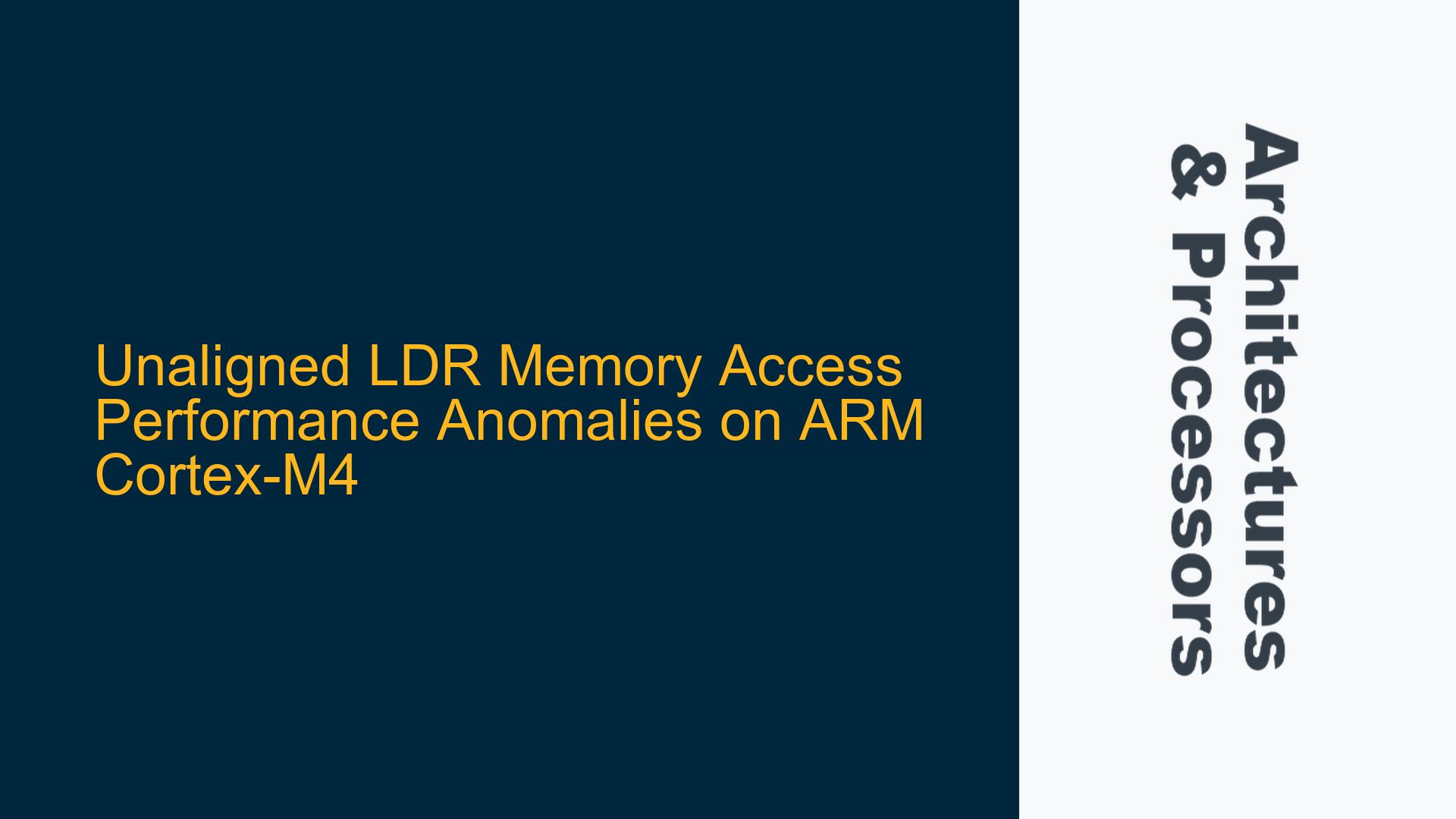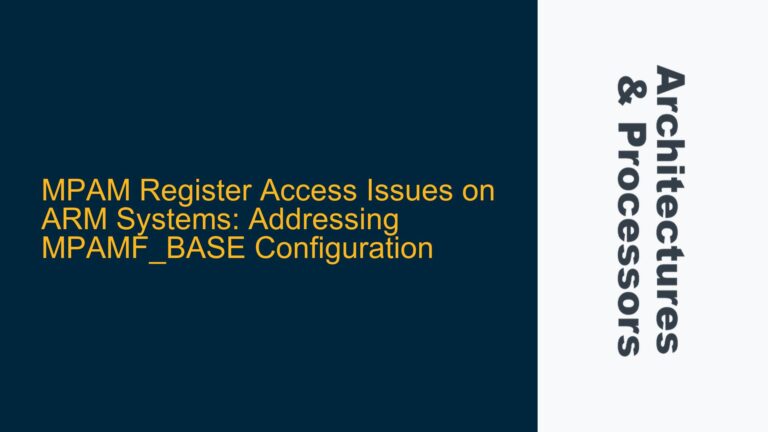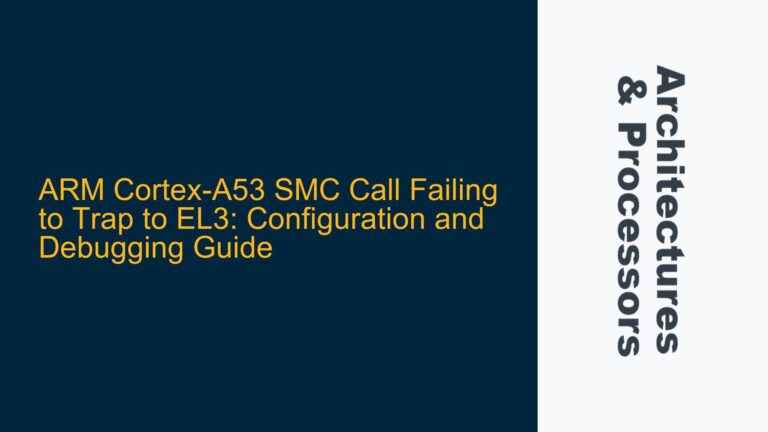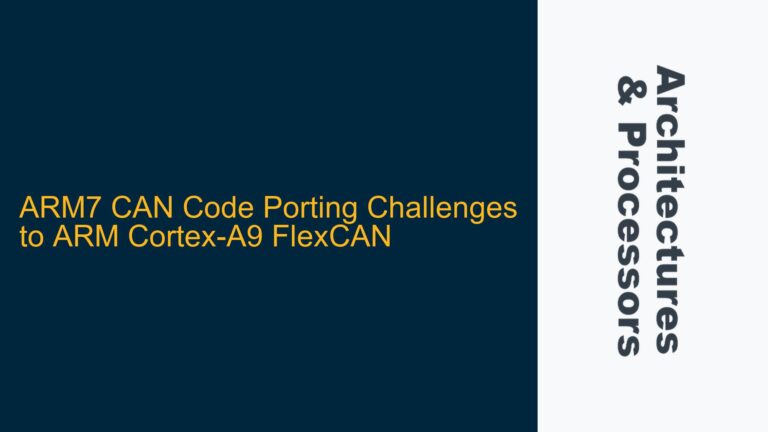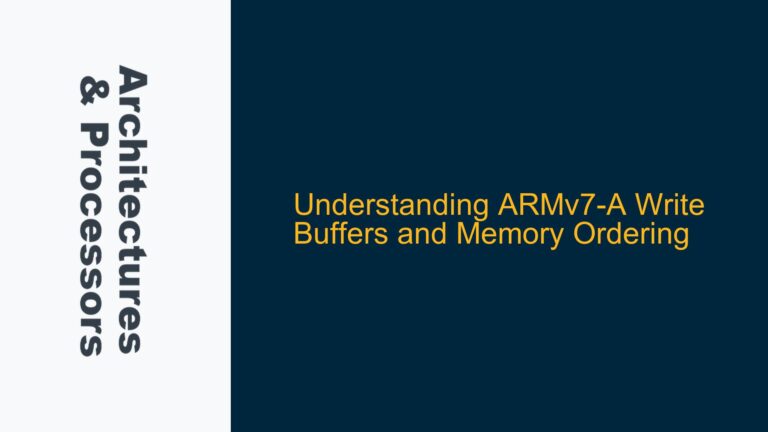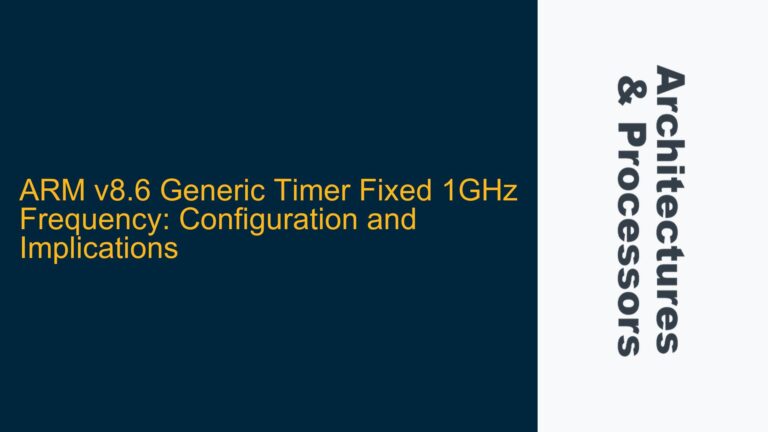ARM Cortex-M4 Unaligned LDR Access Timing Discrepancies
When performing unaligned memory accesses using the LDR instruction on an ARM Cortex-M4 processor, the expected behavior is that two memory read cycles are required to retrieve the data, regardless of whether the address is off by 1, 2, or 3 bytes from a word-aligned boundary. However, empirical measurements reveal a significant anomaly: the execution time for the "off by 2" case is approximately 25% faster than the "off by 1" or "off by 3" cases. This discrepancy suggests that the memory access patterns and internal microarchitectural behavior of the Cortex-M4 may not be as straightforward as initially assumed.
The Cortex-M4, based on the ARMv7-M architecture, is designed to handle unaligned memory accesses efficiently, but the underlying mechanisms can lead to unexpected performance variations. The LDR instruction, when used with unaligned addresses, typically requires the processor to perform multiple memory accesses to fetch the complete word. However, the timing differences observed in the "off by 2" case indicate that the memory subsystem or the bus interface unit (BIU) may be optimizing certain access patterns more effectively than others.
To understand this behavior, it is essential to delve into the Cortex-M4’s memory access architecture, including the role of the AHB (Advanced High-performance Bus) and the memory protection unit (MPU). The AHB is responsible for handling memory transactions, and its behavior can significantly impact the performance of unaligned accesses. Additionally, the Cortex-M4’s pipeline structure, which includes fetch, decode, execute, and memory stages, may introduce variations in how unaligned accesses are processed, depending on the alignment offset.
The observed timing differences could also be influenced by the memory type being accessed. For instance, accesses to SRAM, Flash, or peripheral memory regions may exhibit different performance characteristics due to variations in wait states, bus arbitration, and memory controller optimizations. Furthermore, the Cortex-M4’s prefetch unit, which attempts to anticipate and fetch instructions and data ahead of time, may interact differently with unaligned accesses depending on the alignment offset, leading to the observed performance discrepancies.
Memory Subsystem Optimizations and Alignment-Dependent Access Patterns
The Cortex-M4’s memory subsystem is designed to optimize performance for aligned memory accesses, but it also includes mechanisms to handle unaligned accesses efficiently. However, these mechanisms may not be uniformly effective for all alignment offsets, leading to the observed performance variations. One possible cause of the faster "off by 2" case is that the memory subsystem can more efficiently handle 2-byte misalignments due to the way the AHB splits unaligned accesses into multiple transactions.
When an LDR instruction accesses an unaligned address, the AHB typically splits the access into two separate transactions: one for the lower part of the word and one for the upper part. For a 2-byte misalignment, the split may result in two transactions that are more balanced in terms of data transfer size, allowing the memory controller to handle them more efficiently. In contrast, a 1-byte or 3-byte misalignment may result in transactions that are less balanced, leading to additional overhead and longer access times.
Another factor that could contribute to the performance discrepancy is the Cortex-M4’s handling of cache lines and memory bursts. The Cortex-M4 does not have a data cache, but it does support burst transfers on the AHB, which can improve memory access efficiency. For a 2-byte misalignment, the memory controller may be able to combine the two transactions into a single burst transfer, reducing the overall access time. For 1-byte or 3-byte misalignments, the transactions may not align as well with the burst transfer boundaries, resulting in less efficient memory access patterns.
The Cortex-M4’s pipeline structure may also play a role in the observed timing differences. The pipeline includes stages for instruction fetch, decode, execute, and memory access, and the way unaligned accesses are handled can affect the pipeline’s efficiency. For a 2-byte misalignment, the pipeline may be able to overlap the two memory transactions more effectively, reducing the overall execution time. For 1-byte or 3-byte misalignments, the pipeline may experience more stalls or bubbles, leading to longer execution times.
Additionally, the Cortex-M4’s prefetch unit, which attempts to fetch instructions and data ahead of time, may interact differently with unaligned accesses depending on the alignment offset. For a 2-byte misalignment, the prefetch unit may be able to anticipate the memory access pattern more accurately, reducing the latency of the memory transactions. For 1-byte or 3-byte misalignments, the prefetch unit may be less effective, leading to longer access times.
Implementing Alignment-Aware Memory Access Strategies and Performance Optimization Techniques
To address the performance discrepancies observed in unaligned LDR accesses on the Cortex-M4, several strategies can be employed to optimize memory access patterns and improve overall system performance. One approach is to ensure that data structures are aligned to word boundaries whenever possible, minimizing the occurrence of unaligned accesses. This can be achieved by using compiler directives or manual alignment techniques to ensure that data is stored at aligned addresses.
When unaligned accesses are unavoidable, it is important to understand the specific alignment patterns that lead to the best performance. As observed in the "off by 2" case, certain alignment offsets may result in more efficient memory access patterns. By structuring data and memory access routines to favor these alignment patterns, it may be possible to achieve better performance even when unaligned accesses are required.
Another optimization technique is to use the Cortex-M4’s memory protection unit (MPU) to configure memory regions with specific access attributes. The MPU can be used to define memory regions with different alignment requirements, allowing the processor to handle unaligned accesses more efficiently. For example, memory regions that are known to contain unaligned data can be configured with specific attributes that optimize the handling of unaligned accesses, reducing the performance impact.
In cases where unaligned accesses are frequent and performance is critical, it may be beneficial to use software techniques to handle unaligned data. For example, instead of using the LDR instruction to access unaligned data, it may be more efficient to use a combination of LDRB (load byte) and LDRH (load halfword) instructions to manually construct the desired word from individual bytes or halfwords. While this approach may require more instructions, it can provide more predictable performance and avoid the overhead associated with unaligned LDR accesses.
Finally, it is important to consider the impact of memory type on unaligned access performance. Different memory regions, such as SRAM, Flash, and peripheral memory, may exhibit different performance characteristics for unaligned accesses. By understanding the specific behavior of each memory type, it is possible to optimize memory access patterns and minimize the performance impact of unaligned accesses.
In conclusion, the performance discrepancies observed in unaligned LDR accesses on the ARM Cortex-M4 are influenced by a combination of memory subsystem optimizations, alignment-dependent access patterns, and pipeline efficiency. By understanding these factors and implementing alignment-aware memory access strategies, it is possible to optimize performance and achieve more predictable behavior in systems that require unaligned memory accesses.
